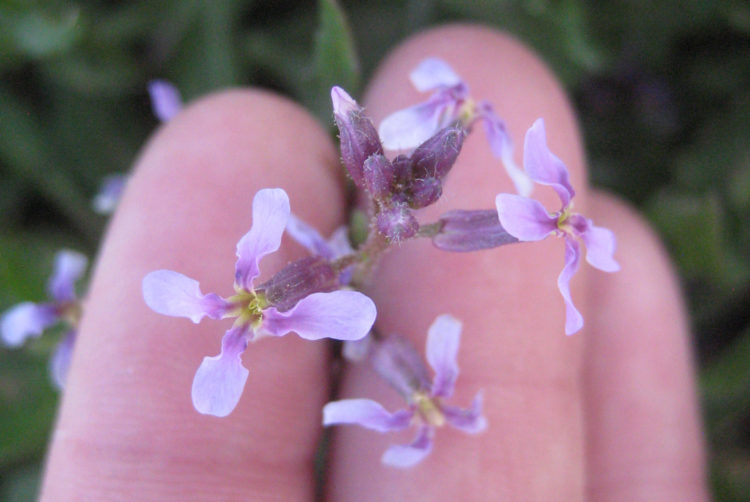
I’m just back from a two-day spring foray in Denver, where I visited old places with old friends and new places with new friends, along with a few solo missions—looking for wild edible plants, of course.
How nice it is to see spring springing up down low (around 5,000 feet), to hear birds chirping and see people out walking, enjoying the sun. Swaths of green decorate expanses of earth where not long ago it was white with snow or brown and dry.
Among the plants I observed and collected on this trip, wild mustards made a strong showing. These are often overlooked or passed over for sexier wild fare, but wild mustards are plentiful and accessible throughout the Denver area right now—making them a good choice for a late April, early May foray.
About Mustards
Mustards are in the Brassicaceae family, which includes both wild and cultivated plants. Brassicaceae family members you can buy at the grocery store include such ubiquitous veggies as broccoli, cabbage, cauliflower, turnip, radish, horseradish, collard greens, and kale.
Brassicaceae family members you can gather for free in the Denver area right now include musk mustard (Chorispora tenella), tansy mustard (Descurainia sophia), field pennycress (Thlaspi arvense), and watercress (Rorippa nasturtium–aquaticum) if you’re brave. Other wild mustards you might find include wintercress (Barbarea vulgaris), garlic mustard (Alliaria petiolata), and shepherd’s purse (Capsella bursa-pastoris); for a good overview of those see the “pungent greens” section of John Kallas’ (2010) book, Edible Wild Plants.
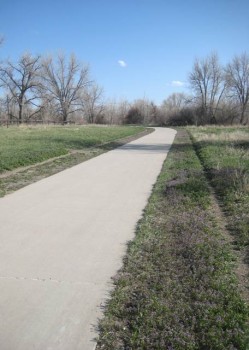
Musk Mustard
I have to thank my friend Butter for introducing me to musk mustard, also known as blue mustard (Chorispora tenella). You can’t miss it in Denver right now. From the car window, it presents as a carpet of happy light purple, sometimes stretching great distances.
Upon closer inspection, the tiny purple flowers are made up of the four-petal arrangement characteristic of mustards. The leaves are a shade of dark gray-green, and when you walk through a patch of it, a distinctive aroma smacks you in the senses.
Butter pointed out that the leaf has a scent and flavor reminiscent of mushrooms, of all things, but I also find the stem and leaf stem pieces to have a pleasing spice to them when chopped up in a salad.
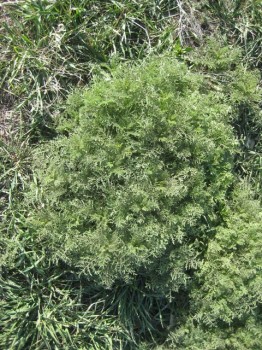
Tansy Mustard
Near the carpet of musk mustard, or perhaps intermingled with it, you might also see tansy mustard (Descurainia sophia). It appears fuzzy, but upon closer inspection reveals leaves that are “highly dissected and delicate looking,” as Cattail Bob Seebeck (1998) describes them.
Later, the flowers are yellow, tiny, and four-petaled, and the seedpods look like long hairs, arranged in the raceme shape typical of mustards.
I’ve eaten tansy mustard greens sparingly, both fresh and in stir fries, potato salads, and salads, although they are not my favorite. Of course, every green has its own flavor and palates differ, so a field taste is not a bad idea if you are planning to collect in quantity.
This time, I only took a handful of tansy mustard. I’ll continue to experiment with it in the kitchen, and then if I want more I can always go back for it.
Watercress
Watercress (Nasturtium officinale) grows where you’d expect it to—in water. It is often found carpeting entire streams and drainages. As it grows, the compound leaves of odd-numbered leaflets becomes more distinctive, and the flowers are white and four-petaled.
We found a good batch of it growing in a drainage in southwest Denver Friday, though it was very young.
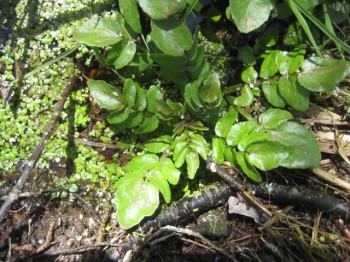
Because watercress is an aquatic vegetable, however, it is important to be cautious about the possibility of contamination as well as contracting water-borne creepy crawlies.
According to Colorado microbiologist Skip Gossack, liver flukes (Fasciola hepatica) are endemic to the region. They occur where livestock or wild animals, a species of snail, and an aquatic vegetable like watercress make it possible for them to complete their life cycle.
If a person eats watercress where the fluke’s metacercariae have encysted upon it, he or she could contract a liver fluke, which under normal conditions would then proceed to dine upon his or her liver. Although Gossack couldn’t cite any local cases of humans contracting fascioliasis, in some regions of the world where raw watercress is eaten widely, it is a big problem—especially when numerous cysts are ingested by human eaters.
Thus, cooking is probably the safest bet to kill any encysted metacercariae. That, or collecting from a fresh, clean spring rather than water that’s passed through ranches or wildlife preserves. Or, as Hank Shaw says for his region, collecting “above the cow line.” Since watercress grows from the tips rather than the base, and the encysting occurs in the water, it’s good practice to harvest above the water level (some say as long as the water level hasn’t dropped recently).
Or you can buy your watercress at the grocery store—just think twice about doing so in endemic areas abroad, however. Coloradan Maury Grimm says the encycsted metacercariae look like a slug on the stem, though I have yet to find one myself.
Field Pennycress
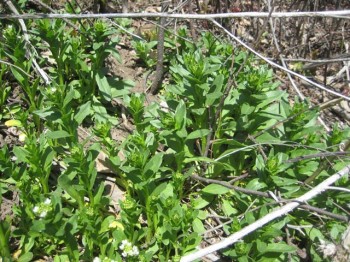
And then there’s the pennycress. As you might know about me already, I just can’t say enough good things about field pennycress (Thlaspi arvense)—which is funny because a lot of people dislike this plant. It’s called “stinkweed” in some areas, like in the Midwest, where it takes over entire fields meant for crop plants and purportedly has an icky smell.
Field pennycress seeds—which I use to make a fantastic honey mustard—are under consideration for use as a biofuel feedstock due to their high oil content and the fact that they are not (normally) a food plant for humans. But for wild food foragers, the spicy leaves, green seedpods, and dry seeds are all fair game.
Pennycress and I have an excellent personal relationship to boot, because it’s the plant that kicked me back onto this long-neglected wild edible tangent a couple years ago. So of course I’m always happy to see my friend return each spring—first down low, then here up high.
It’s not the easiest plant to identify in its spring rosette form; the white, four-petaled flowers and raceme of flat, round, notched seedpods that develop later are much more distinctive. But once it bolts and flowers, younger specimens are often to be found nearby, as was the case in southwest Denver a couple days ago. The dried forms can often be found nearby too.
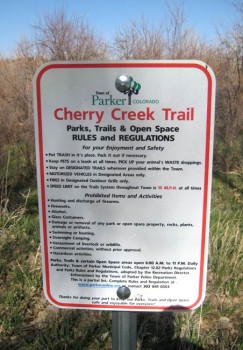
I learned field pennycress by spending a season watching rosettes, hypothesizing which were the pennycress, and then observing their growth to confirm my suspicions. Then the next year they popped up in the same place again, making identification in rosette form easier.
For my culinary preparation this time, I tried steaming the young shoots and their broccoli-like tops, inspired by Kallas’ photo of a steamed field mustard dish in Edible Wild Plants. But it was so strong as to be inedible, in my opinion. So then I chopped the steamed pennycress up and threw it, sparingly, into a fried rice we’d made the night before.
I concur with what Cattail Bob says in Best-Tasting Wild Plants of Colorado and the Rockies (1998): “A little goes a long way.”
A Word of Caution
Please keep in mind that positive identification is a must prior to eating wild plants. You can use wild edible plant ID guides or generalist guides to confirm a species. There are some poisonous plants springing up right now too—like poison hemlock (Conium maculatum) and houndstongue (Cynoglossum officinale, a medicinal that Cattail Bob Seebeck describes in his 2012 textbook, Survival Plants of Colorado, Vol. 1 as “formerly recommended for internal use” but cites as too risky for the liver), so play it smart and don’t put anything in your mouth if you’re not 100% sure what it is. Thanks!
Updated 2.21.21

Oh how I wish I could find safe watercress! The very words “liver flukes” give me the skeevies.
By the way, there are TONS of wild mustards, so if anyone has observed other edible wild mustards in the Denver area and beyond, by all means share them here!
Thank you for the Chorispora tenella picture! Been looking around for what this guy was. Now to make sure with the leaves and so on and then on to the taste test!
Sure thing, Reft. Also, my friend recently posted a pictorial study of Chorispora tenella if you are interested: http://hungerandthirstforlife.blogspot.com/2014/04/chorispora-tenella-study.html. Also I do lots of picture posting with local wild edible Colorado plants at http://www.facebook.com/wildfoodgirl.
Sincerely
-WFG
I am pretty sure soaking the watercress in raw apple cider vinegar for a few hours would render it safe to eat. For those into it, EM(effective microorganisms)would make an ideal soaking solution, leaving no chance of flukes.
Yes, there are a lot of different mustards in Denver and the Springs. At least there is pickling the excess, because there is too much to eat otherwise, lol.
Great article, thanks.